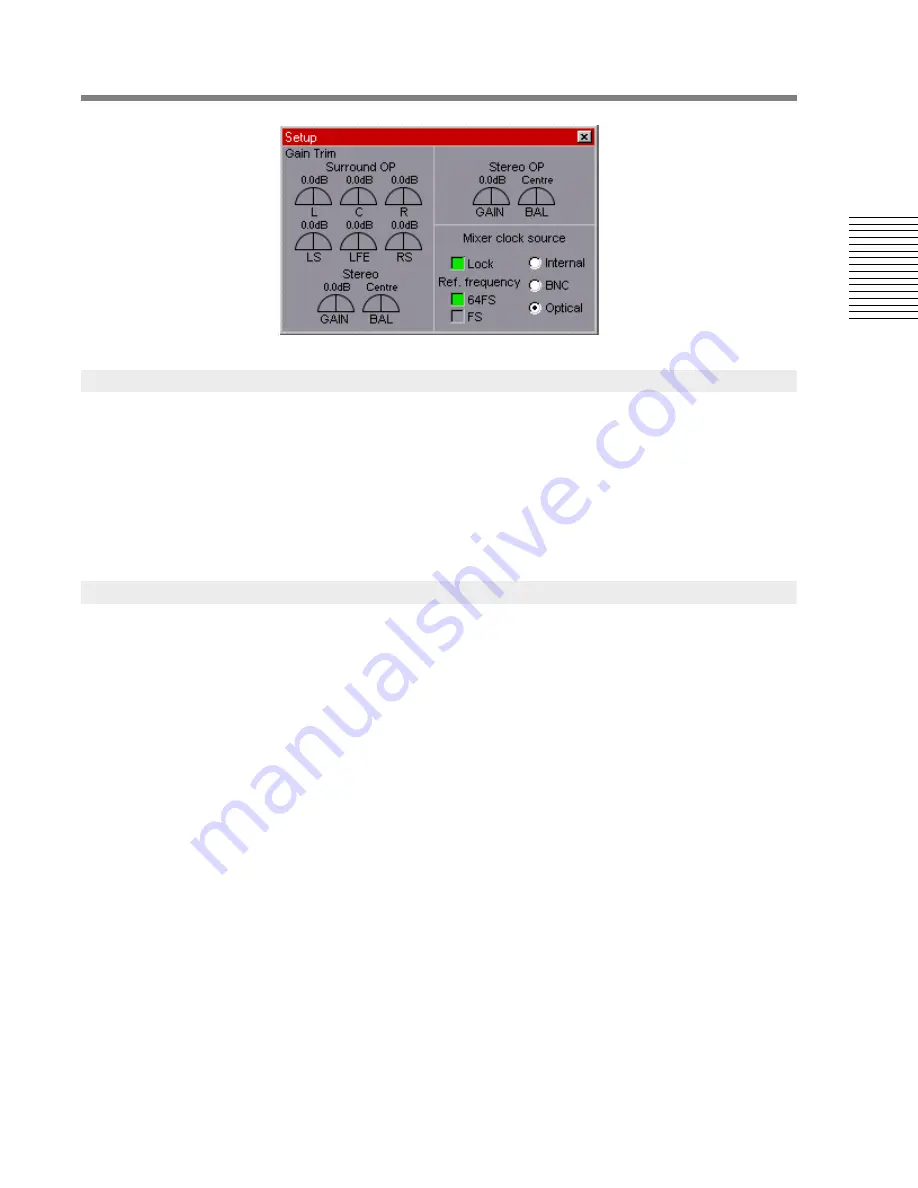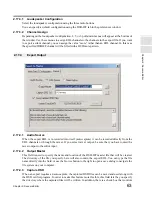
C
hap
te
r 3:
So
no
m
a
Mi
xer
Chapter 3: Sonoma Mixer
77
The Gain Trim controls are divided into three groups:
•
The
Surround OP
controls provide levels for each of the surround output speakers in Surround
Mode.
•
The two
Stereo
controls provide for gain and balance of front L/R surround output speakers
when in Stereo Mode and with Stereo Output Disabled.
•
The
Stereo OP
group provides controls for gain and balance of L/R stereo output speakers, in
Stereo Mode and with Stereo Output Enabled.
The master clock can be set to either INTERNAL, BNC or OPTICAL via the supplied radio buttons.
The latter two options select an external clock. Next to the selector switches are indicators which
show the selected external frequency: 44.1kHz (
Fs
) or 2.8224MHz (
64Fs
). The LOCK indicator is lit
if the internal clock is locked to the indicated source. When the source is changed, the internal clock
usually takes a second or two to re-establish lock.
For use with the Sonoma Editor, the OPTICAL radio button should be selected. When launched, the
OPTICAL radio button is selected by default.
If the mixer clock is supplied externally (i.e., via BNC or OPTICAL), it is possible that the mixer
application may not be locked if, for example, there is a cabling problem. If no suitable clock is
received by the mixer, you will be warned by a message which appears above the master fader on the
mixer screen. In this event, test the equipment connections, make sure power is supplied to the
external source, and that the clock source is configured correctly.
Note:
Before changing clock source, be sure to turn down the inputs to your analog monitoring
equipment. Modifying the clock source while the loudspeakers are turned up is dangerous
for your equipment and your ears, and should be avoided.
3.4.1
Gain Trim
3.4.2
Mixer clock source
















































